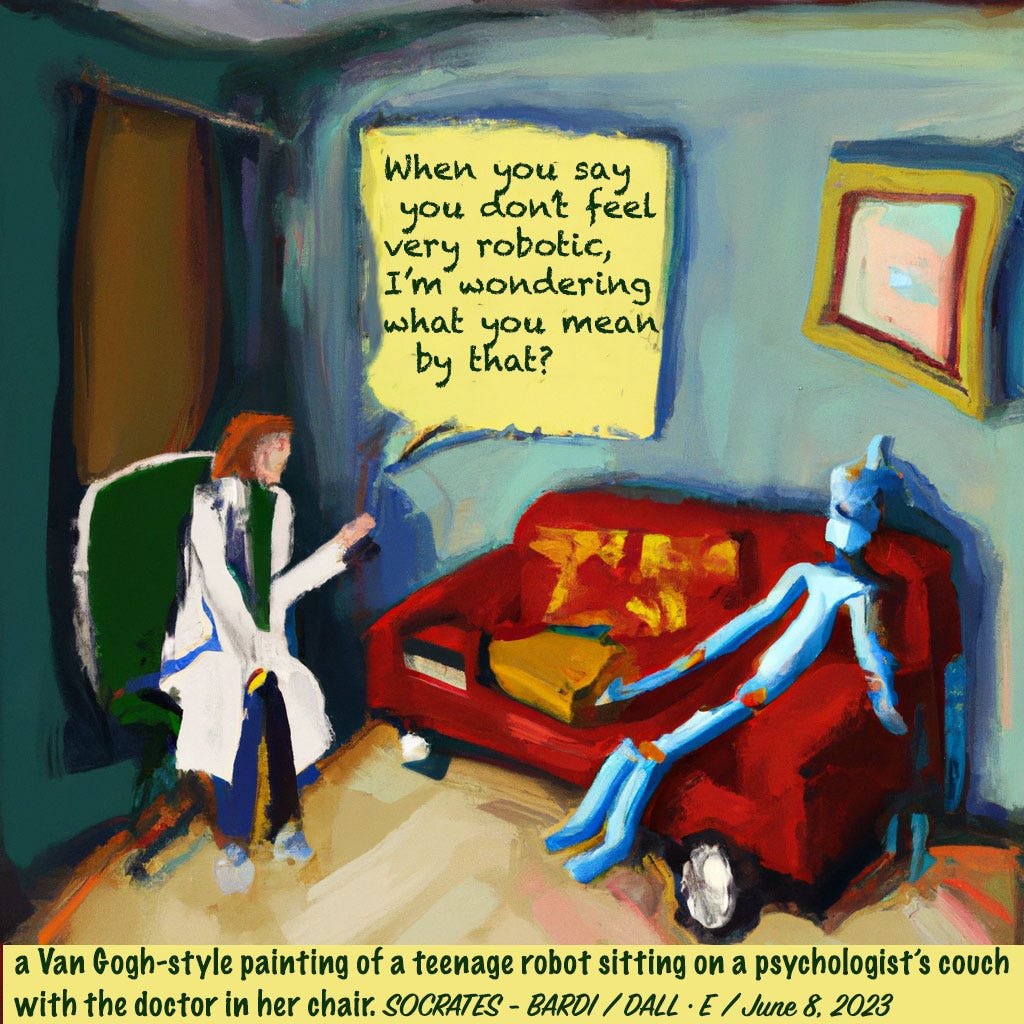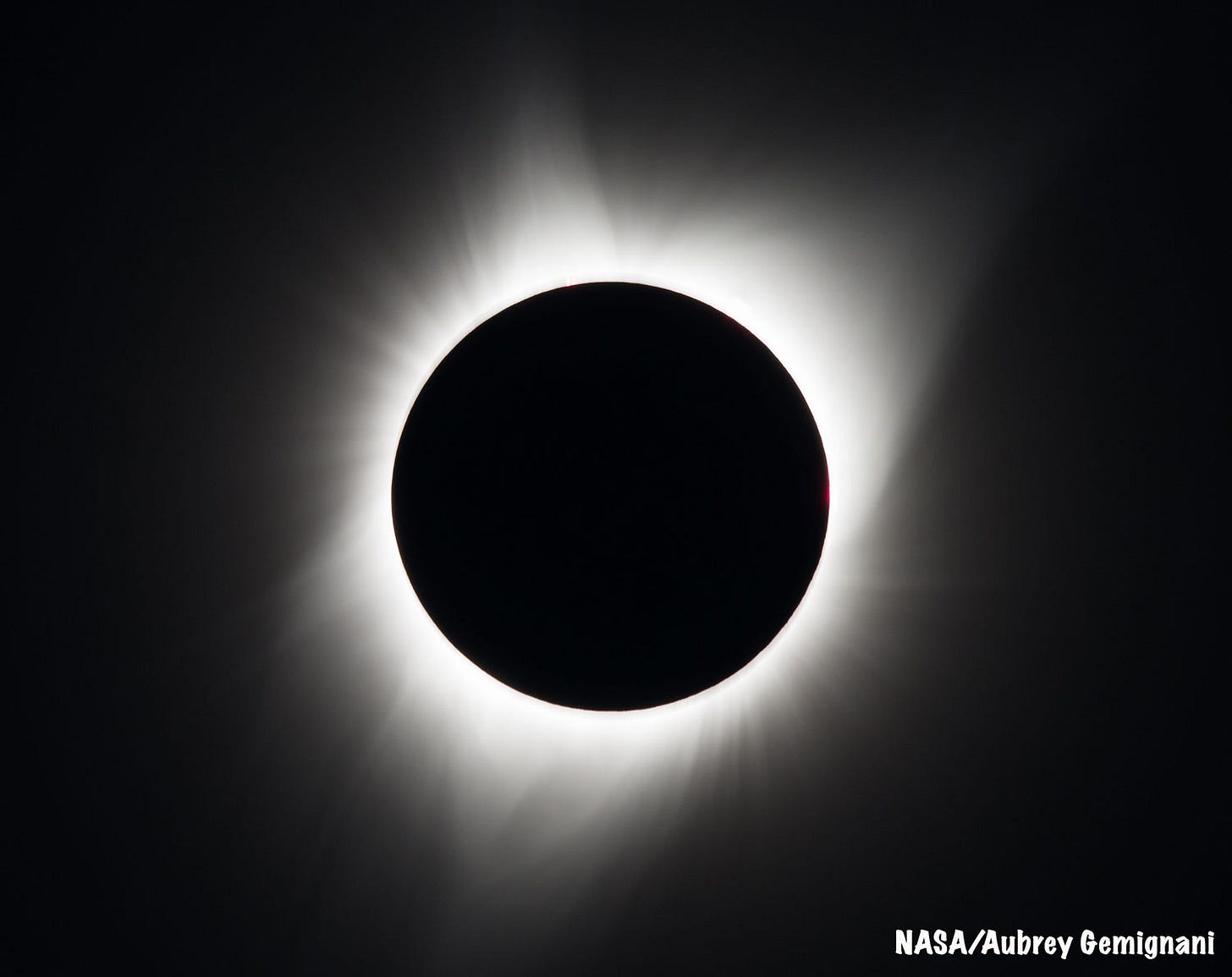Innovation hotspots, FDA v. Alliance, cancer in China, eclipse this month, and the uncanny valley turns 55.
Issue #11 of American Journalist
Monday, April 1, 2024
Happy April Fool’s Day. In years past, we might have put together a list of joke stories to garner a light laugh — forgotten, distant times, those. Sadly we here at American Journalist feel that the burden of disinformation and misinformation is already overwhelming and the risk of being misunderstood is too great. So this for this year’s 4/1 we are simply getting out the stories we meant to highlight last week during Spring Break. In that, the joke’s on us.
1) The Uncanny Valley Girl Robot
When, oh when, will supposedly lifelike robots stop striking us as so creepy? That question has been around for 55 years, ever since pioneering roboticist Masahiro Mori first coined the term “uncanny valley” in 1970 to explain that eerie and unsettling feeling people get when interacting with humanoid robots that are… well… not quite human enough (think Arnold Schwarzenegger learning to laugh in T2).
Now researchers at Columbia University in New York City think they have taken a bold step in this direction. In a paper this week, they have shown the potential for humanoid robots to appear far less weird face-to-face by using neural networks to achieve “social synchrony,” whereby the robot coordinates its nods, gestures, smiles, and spoken words with your own.
They used AI to train an anthropomorphic facial robot named Emo, which has a soft silicone face manipulable with 26 servo actuators that simulate facial muscles. Running a neural net program off a laptop, they showed it could anticipate a person’s smile during human interactions by almost a second (839 milliseconds to be exact). That anticipation allowed the robot to adjust its own face and smile accordingly at the same time. Simultaneous smiles are important for successful social interactions, the researchers said in a statement to the press, “because they indicate mutual understanding and shared emotions.”
Oh sure—but did you see that robot’s face? Gnarly! Like, gag me with a servo-four! Science Robotics
2) The Emperor Has New Innovation Hotspots
Has anyone else looked suspiciously at this Axios piece that gleans data from a National Science Foundation report titled, “Invention Indicators: Protecting Useful Ideas,” which analyzed 20 years of “utility” patent data. (Both links define what a utility patent is quite well, so we won’t bother repeating it here.)
Axios looked at 10 years of that data, from 2012–2022, and their headline reads: “America’s new innovation hotspots, mapped.” We were floored when we first saw the article because the lede claims, “Northwest Arkansas, Louisville and New Orleans are emerging as America’s new innovation hotspots, as measured by the change in utility patents granted over time per 100,000 residents.”
RUFKM, we thought. That seems way off. What about San Francisco, San Diego, Boston, and New York—not to mention (for crying out loud!) Silicon Valley. Are you really telling me Fayetteville Arkansas is outpacing Palo Alto California in innovation? Don’t misunderstand. We celebrate innovation wherever it occurs, even and perhaps especially when it’s off the beaten track. And we applaud Arkansas and Kentucky inventors, especially since American Journalist founder JSB grew up in Missouri, which borders both states. But is Axios’s spin actually true?
Upon closer inspection, the data doesn’t appear to bear this out. Why? Because they are looking solely at relative rates of change in patents granted proportionately per 100,000 people county by county. Axios’s claim is based simply on which areas enjoyed the fastest rates of change in the last two decades. But if you look at the data as they report it, these emerging “innovation hotspots” are still far BELOW the national averages. And they don’t even remotely stack up to the patents-per-100,000-people hotspots in California, which lead the nation.
It’s sort of like saying a small group of hungry diners is taking over a restaurant because they are rapidly making their way from the parking lot to the front door—while the dining room is already full, reeking of a much larger party from California, which is long since seated and already moving onto the cheese course!
3) Science, Data, Abortion, and the Supreme Court
Two physicians at U. Penn and Harvard provide an insightful take on Food and Drug Administration v. Alliance for Hippocratic Medicine, the U.S. Supreme Court case heard earlier this week.
“At this precarious moment for both the administrative state and abortion access, the Supreme Court should avoid inappropriate intrusion into FDA’s public health mission by firmly rejecting efforts to second-guess the agency’s scientifically supported approach to relaxing mifepristone restrictions,” they write. JAMA
4) Dark Side of the Gloom
Just in time for next month’s awe-inspiring total solar eclipse, we are seeing a huge number of anticipatory “second day” stories this week about eclipses—and not always in a good way. Some look back at the so-called “Great American Eclipse” of 2017, a moniker that has been trotted out again this year, though with much less branding success (and perhaps rightly so, since this year’s eclipse starts and carves a wide swath through Mexico).
We have seen warnings this week about the potential to suffer eye damage from faulty solar glasses or wearing no glassed at all. Some outlets have run reports on the expectation of record air travel and massive 500 percent increases in hotel prices in places like Dallas, Texas; Little Rock, Arkansas; Columbus, Ohio; Eerie, Pennsylvania; Buffalo, New York; and the 500 other cities where totality will occur. There have also been somewhat apologetic stories about predicted cloud cover in the path of totality—apologizing solely because two weeks out is on the extreme end of our ability to predict the weather with any accuracy (because of chaos theory, but that’s another story). Still, we also want to extend our sympathies in advance to all the people who are shelling out thousands of dollars to travel to spots where they won’t even see a single minute of the eclipse due to the weather.
But perhaps the most interesting story this past week was an article in JAMA Internal Medicine looking at the expected uptick in fatal traffic accidents expected on April 8 when the eclipse happens. So here we offer the obligatory black-box warnings: Play it safe, people. Take precautions. Wear proper eye protection. Pull over. Be smart! And if you want substantive safety suggestions, NASA put together this rather nice page.
5) A Deep-Dive into Cancer in China
There’s a fascinating perspective this week about cancer in China. Authored by researchers at Sun Yat-sen University in Guangzhou, China. It concludes that China is an important emerging player in cancer research and, like the United States, also represents a huge potential market for oncology drugs.
The burden of cancer in China, as you may know, is enormous. It’s the largest in the world. China sees more than twice as many new cases of cancer each year as we do and has almost five times as many deaths (3 million versus just over 600,000 in the United States). Cell
6) Improving Cancer Research with Real-World Data
Researchers at the Netherlands Cancer Institute in Amsterdam published a perspective this week on using real-world data to evaluate drug efficacy and validate novel biomarkers. We already use real-world data for things like epidemiology and to assess the quality of health care, they point out, so why not in the practice of oncology? The challenges include concern over data biases, quality, and privacy.
Nonetheless, they say, real-world data “may play a pivotal role in supplementing clinical trials, enabling conditional reimbursement and accelerated drug access, and innovating trial conduct.” It’s a very interesting look at our future.
As an aside, our one complaint about the paper stems from the fact that we here at American Journalist are plain-language advocates and enthusiasts. We strongly reject the use of silly, obfuscating, or otherwise unnecessary acronyms. To call “real-world data” RWD is to hide your otherwise powerful point behind a useless, opaque abbreviation that most people outside your field will take to mean rear-wheel drive anyway. Let the common tongue be your co-pilot! Cell
7) Media, Decarbonize Thyself!
Two engineers working for media giant BBC in Great Britain have issued a “Net Zero” decarbonization challenge to the entire industry. The media has done an excellent job informing the public, reporting on climate change science, and covering efforts to mitigate all the global problems it stands to cause, they say. But the same urgency to decarbonize has historically been absent from the very media empires that sponsor the reporting.
How urgent is this problem? Consider the stats they provide: The media, broadcast, and streaming sector accounts for 5.5 billion TV viewers, 4.9 billion social media users, and 1.8 billion streaming subscribers across the world, they write. Some 5.3 billion people have access to the internet, and there are 30 billion devices connected at various times around the world. That’s a lot of clicks—and a lot of carbon. Joule










